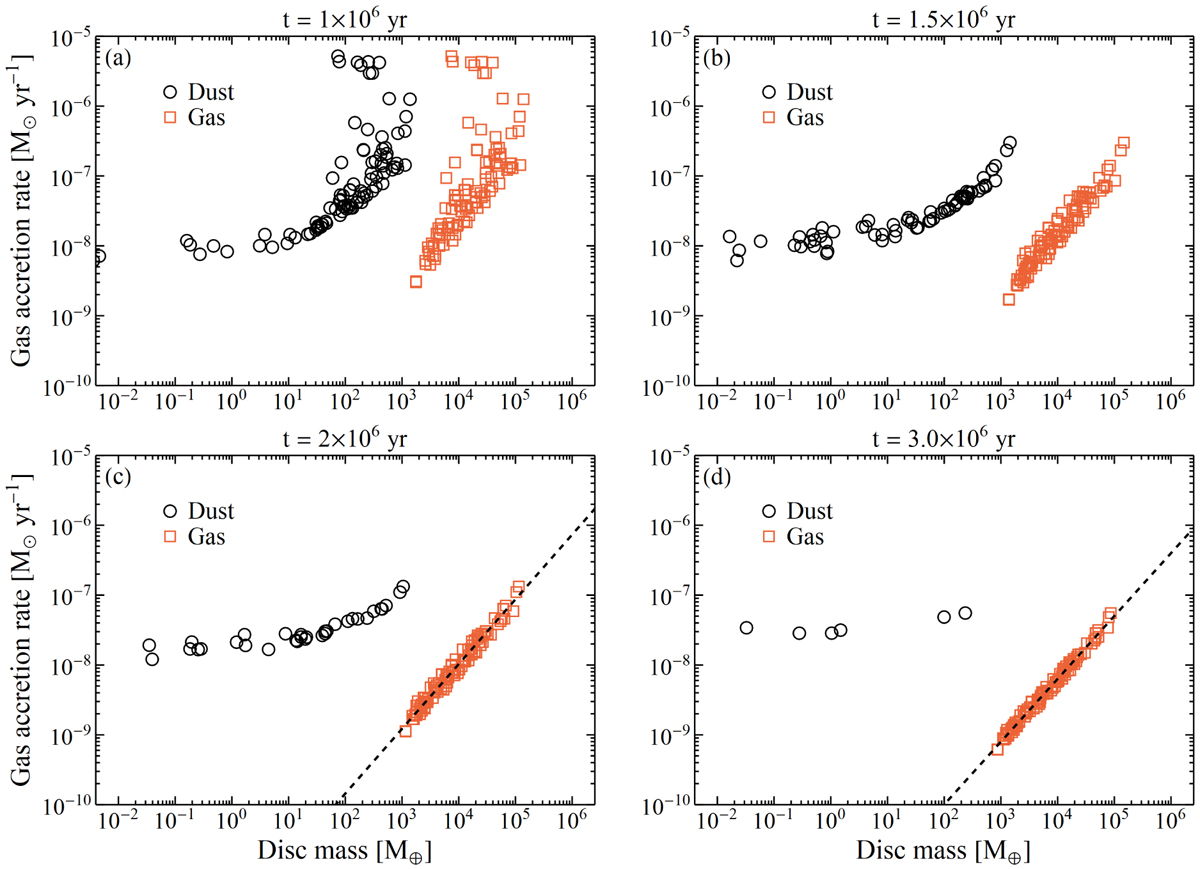Fig. 5

Gas accretion rate as a function of dust (black circles) and gas (red squares) disc mass for protoplanetary discs of the stellar cluster. The dashed black lines show power-law fits of the accretion rate as a function of the gas disc mass (![]() ). The discs are given a random individual age of between 0.0 and 1.0 Myr to mimic a spread in formation times. Panels from a to d: protoplanetary discs at the cluster ages of 1.0, 1.5, 2.0, and 3.0 Myr. For the first 1 Myr the dust is coupled well to the gas inmost discs, and dust disc masses evolve in a very similar way to the gas disc mass. Some of the lowest mass discs have reached the dust drift turn-over at this point. Beyond this time more and more of the dust discs reach the dust turn-over and begin to drain rapidly. At 1.5 Myr the lower mass discs have reached the turn-over point, as can be seen in the flattening of the low-mass end of the dust discs in panel b. At 2 Myr only the most massive dust discs are yet to reach the turn-over and at 3 Myr nearly all discs are drained of dust. Only 4 out of 100 discs still have a dust mass greater than 1
M⊕, although two of these have a mass of more than 100 Earth masses.
). The discs are given a random individual age of between 0.0 and 1.0 Myr to mimic a spread in formation times. Panels from a to d: protoplanetary discs at the cluster ages of 1.0, 1.5, 2.0, and 3.0 Myr. For the first 1 Myr the dust is coupled well to the gas inmost discs, and dust disc masses evolve in a very similar way to the gas disc mass. Some of the lowest mass discs have reached the dust drift turn-over at this point. Beyond this time more and more of the dust discs reach the dust turn-over and begin to drain rapidly. At 1.5 Myr the lower mass discs have reached the turn-over point, as can be seen in the flattening of the low-mass end of the dust discs in panel b. At 2 Myr only the most massive dust discs are yet to reach the turn-over and at 3 Myr nearly all discs are drained of dust. Only 4 out of 100 discs still have a dust mass greater than 1
M⊕, although two of these have a mass of more than 100 Earth masses.
Current usage metrics show cumulative count of Article Views (full-text article views including HTML views, PDF and ePub downloads, according to the available data) and Abstracts Views on Vision4Press platform.
Data correspond to usage on the plateform after 2015. The current usage metrics is available 48-96 hours after online publication and is updated daily on week days.
Initial download of the metrics may take a while.


